Understanding the Lifespan of Group 27 Deep Cycle Batteries
How Long Do Group 27 Deep Cycle Batteries Last?
Group 27 deep cycle batteries are widely used for various applications, including marine vessels, RVs, renewable energy systems, and backup power solutions. They are known for their durability and ability to provide sustained power over extended periods. If you are considering investing in 27 deep cycle batteries, it is essential to understand their lifespan and how to maximize their longevity. The lifespan of a Group 27 deep cycle battery depends on multiple factors such as battery type, usage patterns, maintenance, and environmental conditions. In this article, we will explore how long 27 deep cycle batteries typically last, what affects their longevity, and best practices for extending their lifespan.
- Factors Affecting the Lifespan of 27 Deep Cycle Batteries
- Environmental Factors That Affect 27 Deep Cycle Batteries
- Signs That Your 27 Deep Cycle Battery Is Nearing the End of Its Life
- Extending the Life of Your 27 Deep Cycle Batteries
Factors Affecting the Lifespan of 27 Deep Cycle Batteries
The lifespan of 27 deep cycle batteries varies based on several key factors. While the typical lifespan ranges from 3 to 10 years, understanding these factors can help you optimize battery performance and extend its longevity.
Battery Type and Chemistry
The type of battery chemistry plays a significant role in determining how long 27 deep cycle batteries last.
Lead-Acid 27 Deep Cycle Batteries
Traditional flooded lead-acid (FLA) batteries are among the most common types of deep cycle batteries. These batteries typically last 3 to 5 years if maintained properly. They require regular watering, cleaning of terminals, and equalization charging to prevent sulfation.
AGM 27 Deep Cycle Batteries
Absorbent Glass Mat (AGM) deep cycle batteries offer a longer lifespan compared to flooded lead-acid batteries. AGM 27 deep cycle batteries typically last 4 to 7 years due to their improved design, which eliminates the need for regular maintenance and reduces internal resistance.
Gel 27 Deep Cycle Batteries
Gel batteries use a silica-based electrolyte to form a gel-like consistency. These batteries last 5 to 7 years and are highly resistant to deep discharges and extreme temperatures. However, they require specialized chargers to avoid overcharging.
Lithium-Ion 27 Deep Cycle Batteries
Lithium-ion 27 deep cycle batteries are the most advanced option, offering a lifespan of 7 to 10 years or even longer. They have a higher energy density, deeper discharge capabilities, and minimal maintenance requirements, making them a superior choice for longevity and efficiency.
Depth of Discharge (DoD) and Battery Cycle Life
The depth to which you discharge your 27 deep cycle battery before recharging significantly impacts its lifespan.
- Shallow Discharges (50% or Less): Extends battery life significantly, particularly for lead-acid batteries.
- Deep Discharges (Over 80%): Can shorten battery lifespan, especially in lead-acid types.
- Lithium-Ion Advantage: Lithium-ion batteries tolerate deep discharges much better than lead-acid batteries, making them last longer.
Most lead-acid batteries provide 300 to 1000 charge cycles, while AGM and Gel batteries can handle 500 to 1200 cycles. Lithium-ion batteries can last 2000 to 5000 cycles, which contributes to their extended lifespan.
Charging Practices for 27 Deep Cycle Batteries
Proper charging is one of the most critical factors in determining the lifespan of 27 deep cycle batteries.
Optimal Charging Techniques
- Use a smart charger designed for deep cycle batteries.
- Avoid overcharging, which can lead to overheating and internal damage.
- Prevent undercharging, which causes sulfation in lead-acid batteries.
Charging Voltages for Different Battery Types
- Flooded Lead-Acid: 14.4V to 14.8V (bulk charge), 13.2V to 13.6V (float charge)
- AGM: 14.4V to 14.6V (bulk charge), 13.5V (float charge)
- Gel: 13.8V to 14.1V (bulk charge), 13.1V to 13.3V (float charge)
- Lithium-Ion: 14.4V (bulk charge), no float charge required
Using a charger with the correct voltage settings ensures that your 27 deep cycle batteries remain in optimal condition and last as long as possible.
>>See also RV Electricity Basics A Guide To Run Your RV For Beginner And Master
Environmental Factors That Affect 27 Deep Cycle Batteries
Temperature Extremes and Battery Longevity
Temperature plays a significant role in battery lifespan.
- High Temperatures (Above 85°F / 29°C): Increases internal corrosion and shortens battery life.
- Cold Temperatures (Below 32°F / 0°C): Reduces battery capacity temporarily and may lead to freezing in flooded lead-acid batteries.
Proper Storage Conditions
If you need to store your 27 deep cycle batteries for extended periods:
- Keep them at room temperature (68°F to 77°F / 20°C to 25°C).
- Charge them fully before storage to prevent self-discharge issues.
- Store lithium-ion batteries at 40% to 50% charge for prolonged storage.
Signs That Your 27 Deep Cycle Battery Is Nearing the End of Its Life
As batteries age, they show clear signs of deterioration. Common indicators that your 27 deep cycle battery needs replacement include:
- Reduced Capacity: The battery does not hold a charge as long as it used to.
- Longer Charging Times: It takes more time to reach full charge.
- Swelling or Bulging: Indicates internal damage or overheating.
- Leaking or Corrosion: Especially common in lead-acid batteries.
- Frequent Voltage Drops: The battery discharges faster than expected.
Extending the Life of Your 27 Deep Cycle Batteries
While battery lifespan is partially determined by chemistry, proper maintenance and best practices can significantly improve longevity.
Maintenance Tips for Lead-Acid 27 Deep Cycle Batteries
- Check water levels monthly (for flooded batteries).
- Clean terminals to prevent corrosion buildup.
- Perform equalization charges every few months to prevent sulfation.
Best Practices for Lithium-Ion 27 Deep Cycle Batteries
- Avoid full discharges below 20%.
- Use a battery management system (BMS) to regulate charging and discharging.
- Store in moderate temperatures to prevent degradation.
Proper Usage Tips
- Use battery monitors to track charge levels and prevent deep discharges.
- Avoid mixing old and new batteries in a bank.
- Charge immediately after use to maintain efficiency.
The lifespan of 27 deep cycle batteries varies based on battery type, depth of discharge, charging practices, and environmental conditions. Flooded lead-acid batteries typically last 3 to 5 years, AGM and Gel batteries 4 to 7 years, and lithium-ion batteries 7 to 10 years. Factors such as proper charging, maintenance, and storage play a crucial role in extending battery life.
By following the best practices outlined in this guide, you can maximize the longevity of your 27 deep cycle batteries and ensure reliable power for years to come. Whether you are using them for marine applications, RVs, solar energy storage, or backup power, taking proactive steps in battery care will help you get the most value from your investment.

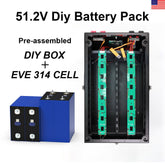

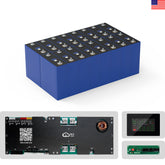

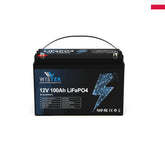
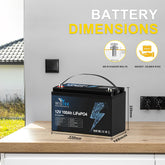
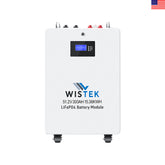
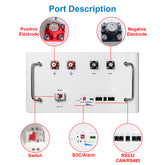
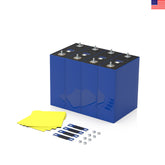
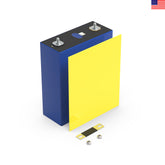
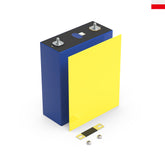

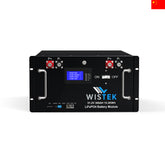
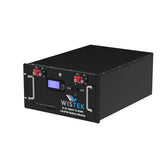
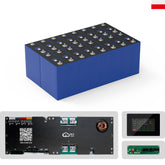



Leave a comment
All blog comments are checked prior to publishing